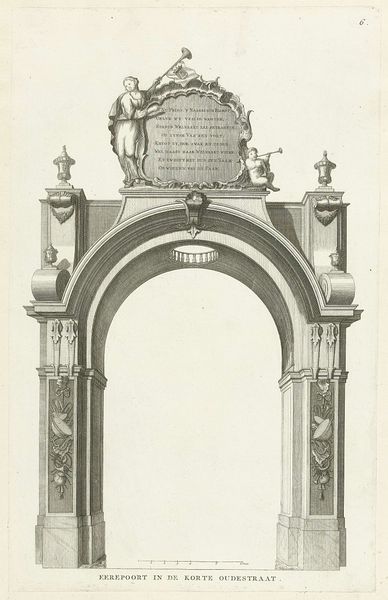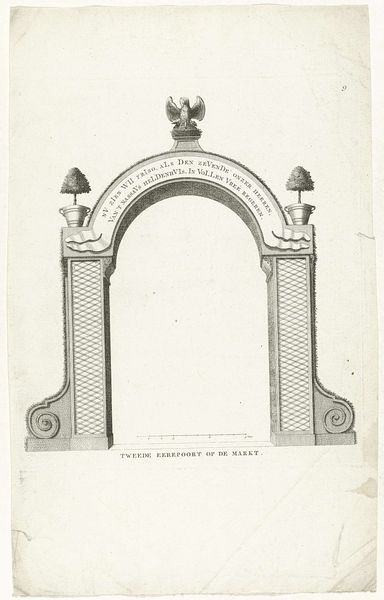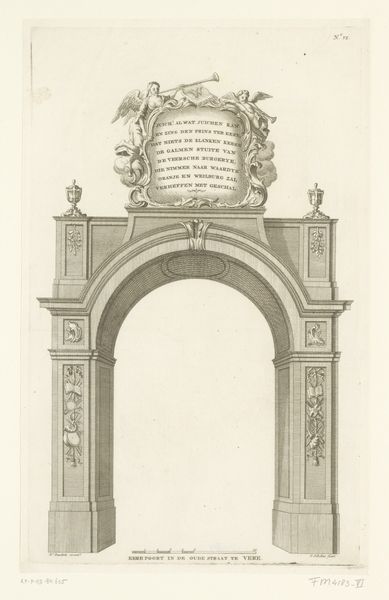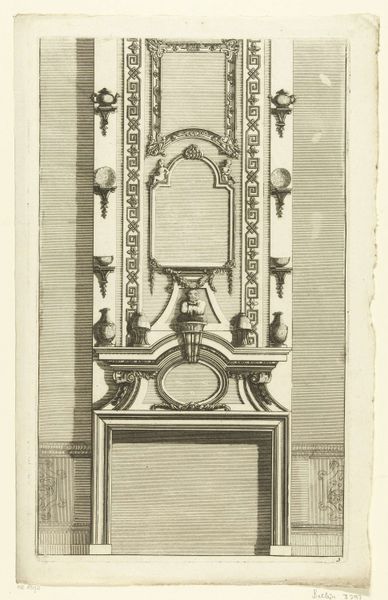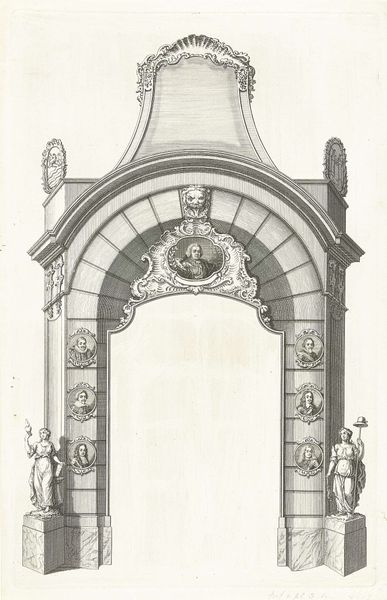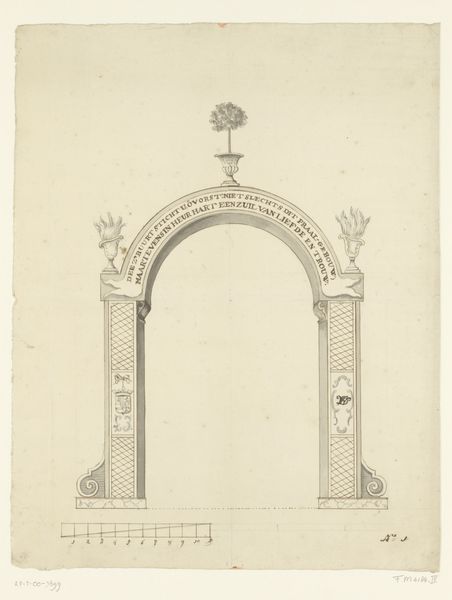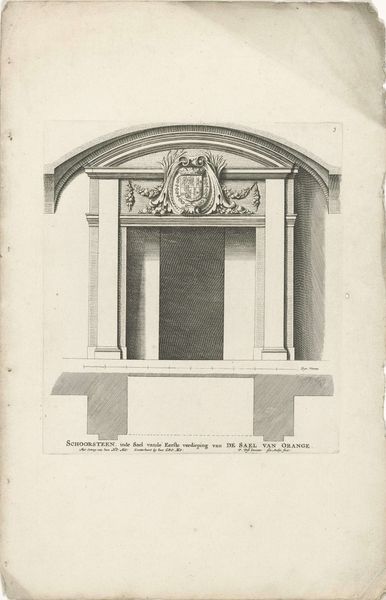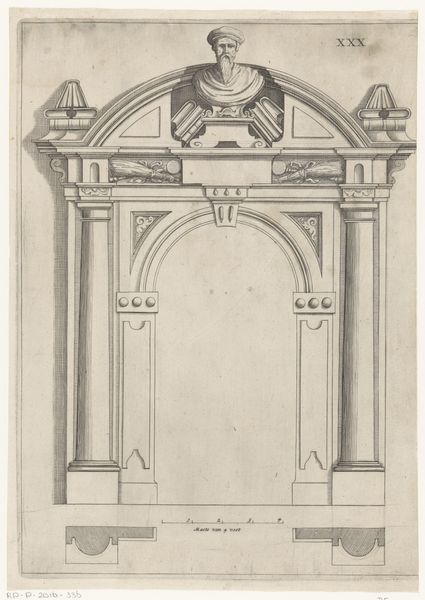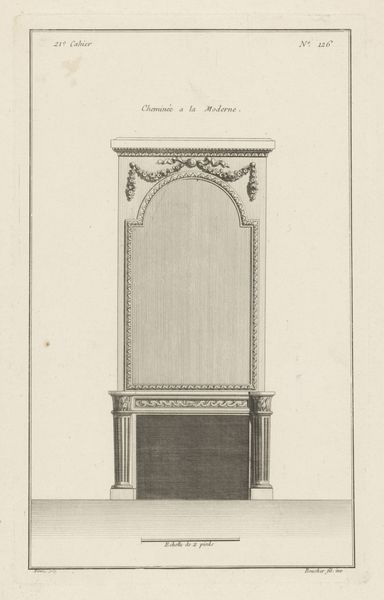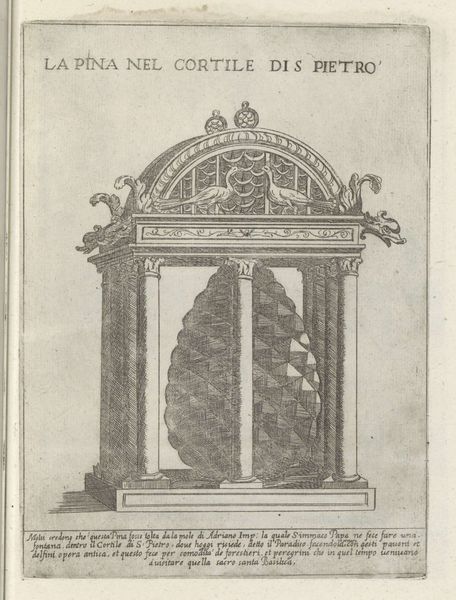
drawing, print, engraving, architecture
#
drawing
#
baroque
# print
#
geometric
#
line
#
cityscape
#
engraving
#
architecture
Dimensions: height 343 mm, width 207 mm, height 408 mm, width 507 mm
Copyright: Rijks Museum: Open Domain
Editor: So, here we have Caspar Jacobsz. Philips's engraving, "Erepoort in de Wijngaardstraat, 1751," which depicts an elaborate archway. It feels almost like a stage set, but entirely static. I'm struck by how precisely everything is rendered. How would you interpret a piece like this? Curator: Well, let's consider what an "erepoort" or triumphal arch meant in the 18th century. This wasn't just about aesthetics; it was about civic pride, power, and commemoration. These structures were often temporary, erected for specific events like a royal visit or a military victory. So, this print captures not just an architectural form, but a moment of political theater frozen in time. Editor: That's fascinating! I hadn’t considered the performative aspect of it. Do you think the location – the Wijngaardstraat – would have been particularly significant? Curator: Absolutely. The choice of location tells us who this display was meant to impress. Was this a wealthy area? What kind of symbolism is used here? Are we celebrating trade, civic virtue, or perhaps military might? Remember, these arches were often funded by local merchants or guilds, so their symbolism would reflect their interests. Also, notice that it is rendered as a "drawing" so we must ask "Is it based on observation or a fantastical drawing?" Editor: That's such a good point, and I see there are indeed decorative panels embedded within the archways which suggest civic identities and portraits. The layers of meaning are amazing. It seems almost like a kind of propaganda. Curator: Exactly! It is a very controlled environment that allows the state to showcase idealized messages about power, governance and prosperity in a public space. Consider how prints like this would have circulated; shaping public opinion even beyond the event itself. What does it mean for a street to be remembered beyond just observation in time, through imagery and symbolism? Editor: I guess it prompts questions about what history is being promoted. Thanks so much! I’m seeing it so differently now.
Comments
No comments
Be the first to comment and join the conversation on the ultimate creative platform.
